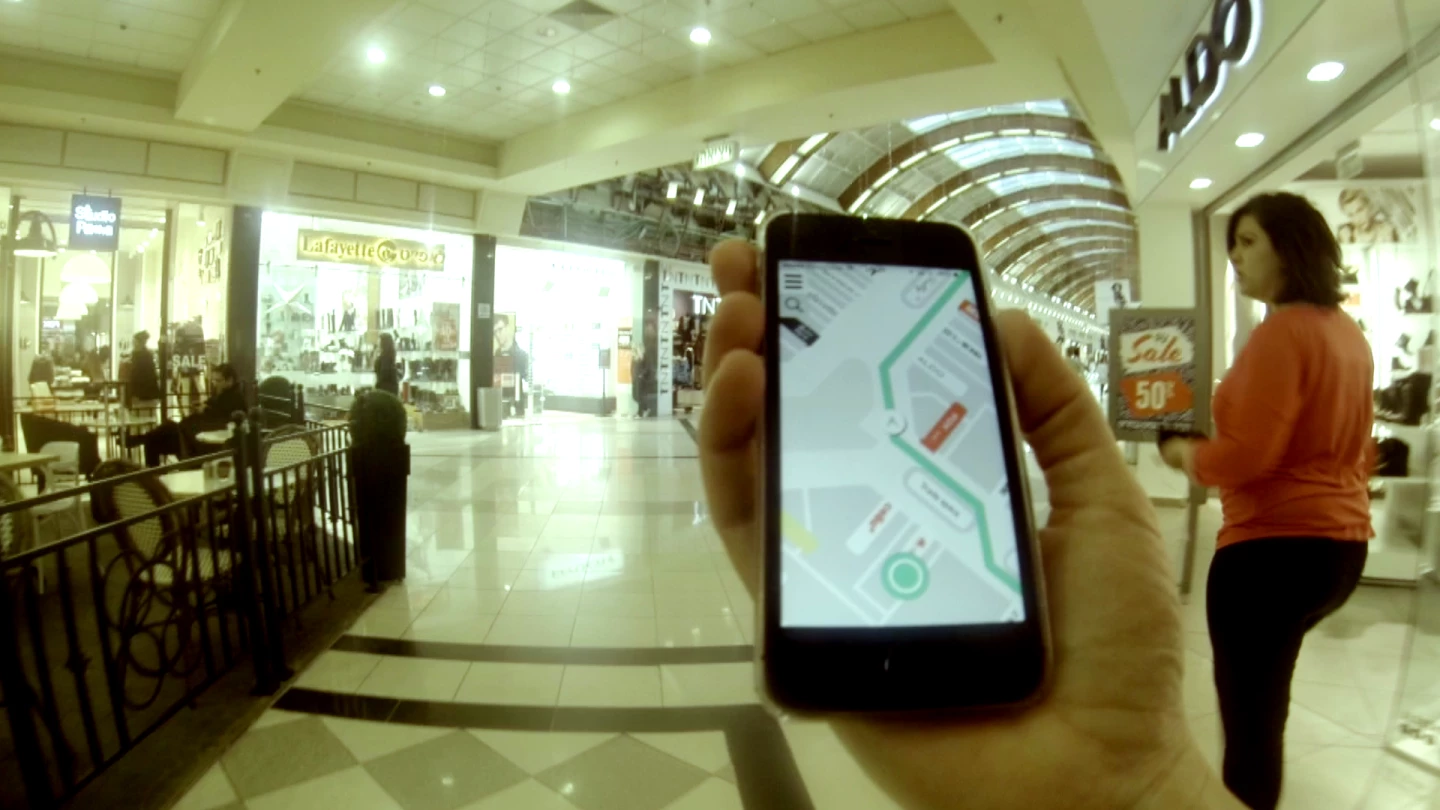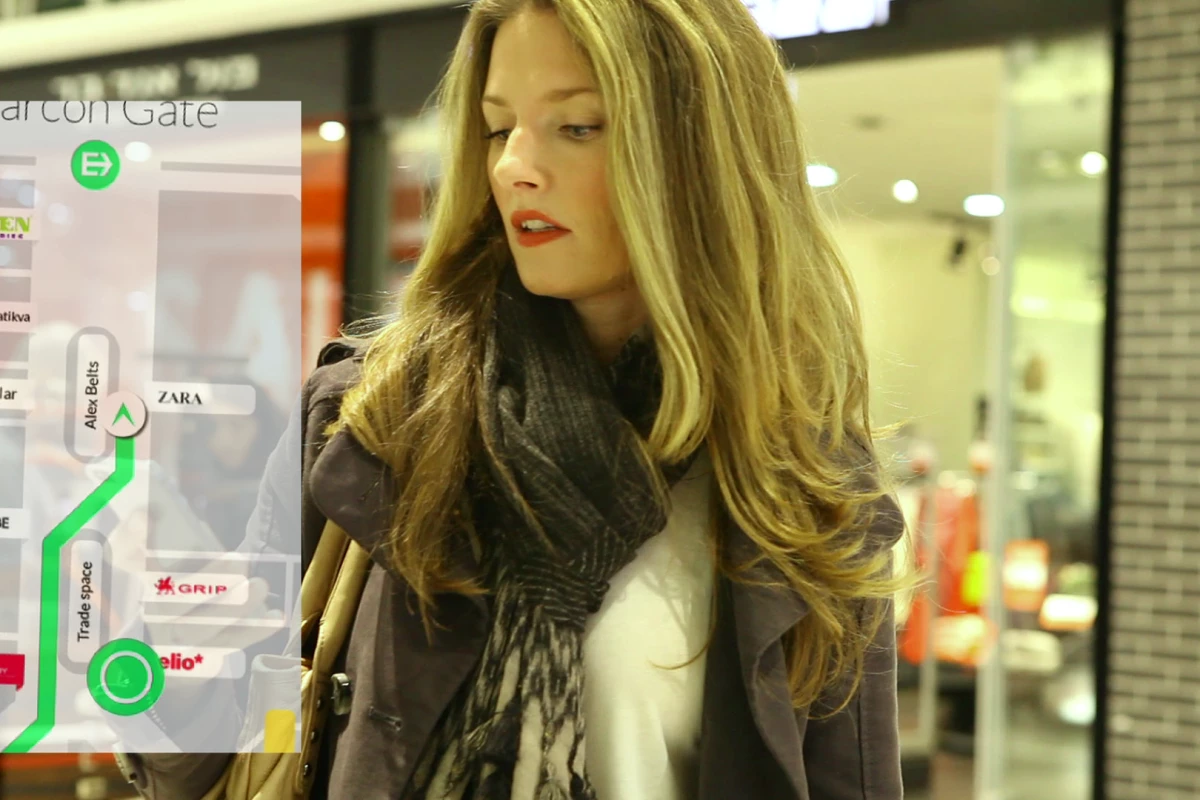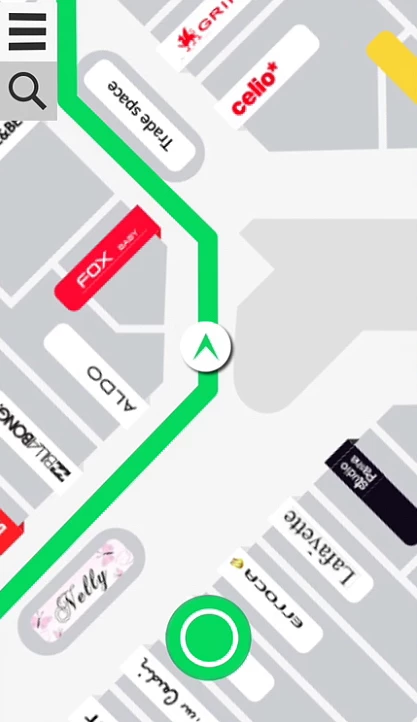Due to those pesky roofs that block access to satellites, smartphone-based GPS systems don't work for navigating indoor environments such as shopping malls. Some non-GPS alternatives are in development, including ones that incorporate rapidly-blinking LED lights or Wi-Fi signals. The just-announced Inside app, however, utilizes the phone's own standard sensors, and is reportedly accurate up to a distance of down to one meter (3.3 ft).
Developed by Israeli start-up Shopcloud, Inside starts by accessing the internet upon entering a building, and accessing a floor plan – this means that buildings offering the system would first have to supply that plan to Shopcloud, plus a team would have to come through to gather spatial data.
Once the information has been downloaded by the user, continued internet access isn't necessary.

The phone uses its camera to spot unique visual landmarks, processing the images using computer vision algorithms to keep track of the user's approximate location. The accelerometer, gyroscope and magnetometer also kick in to track the user's more precise movement through space, and actually "learn" the one-of-a-kind movement signature of that person – apparently, if the phone is handed to someone else, the app will know that it's not the same person.
So far, the basic idea is somewhat similar to those employed by systems such as Smartsense, UnLoc and NAVVIS. Inside also utilizes four other processes, however, which the company is keeping under wraps for now. "We thought about how humans naturally navigate, and tried to imitate that," company co-founder Michael Bar Zeev explained to us.
The app currently works on iPhone models 4S and up, and Android phones with minimum specs similar to those of the Samsung Galaxy S3. A Windows version is also in the works.
According to CEO Gil Devora, beta testing is scheduled to begin in Israel at the end of the month, in 10 public spaces. Approximately 200 locations in the US are currently being mapped, for the official launch in a couple of months. The app should then be available free of charge, to both end users and venues.
Source: Inside






